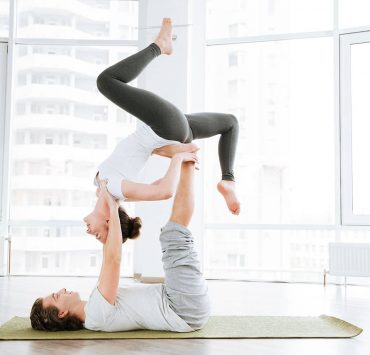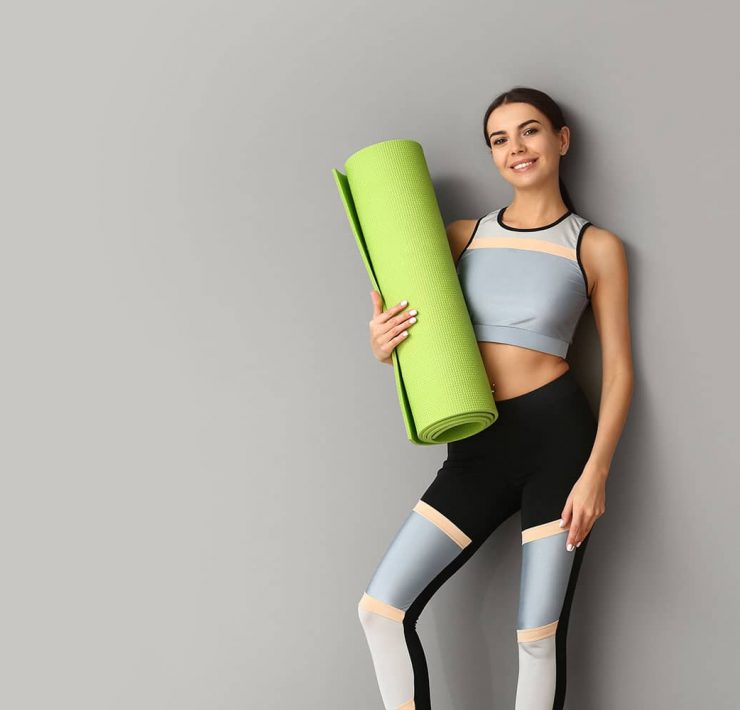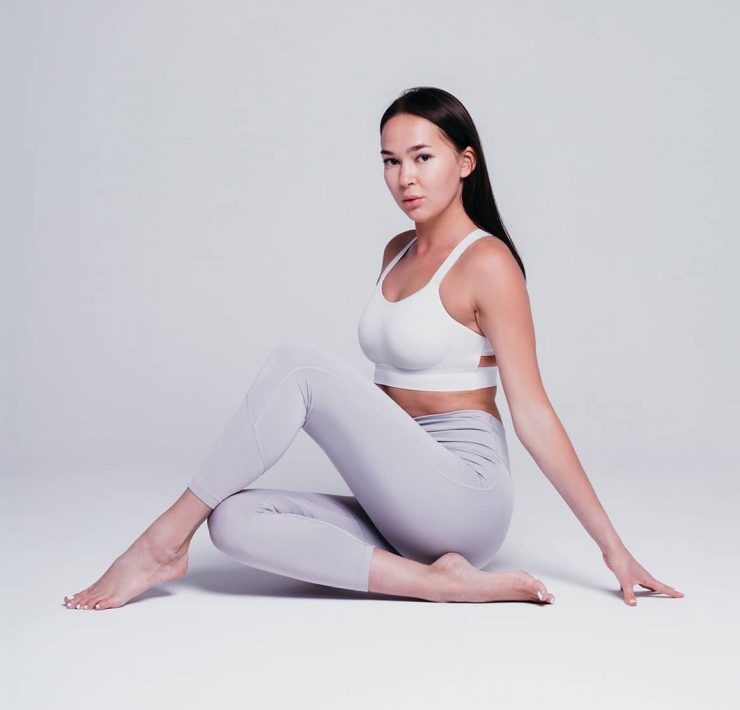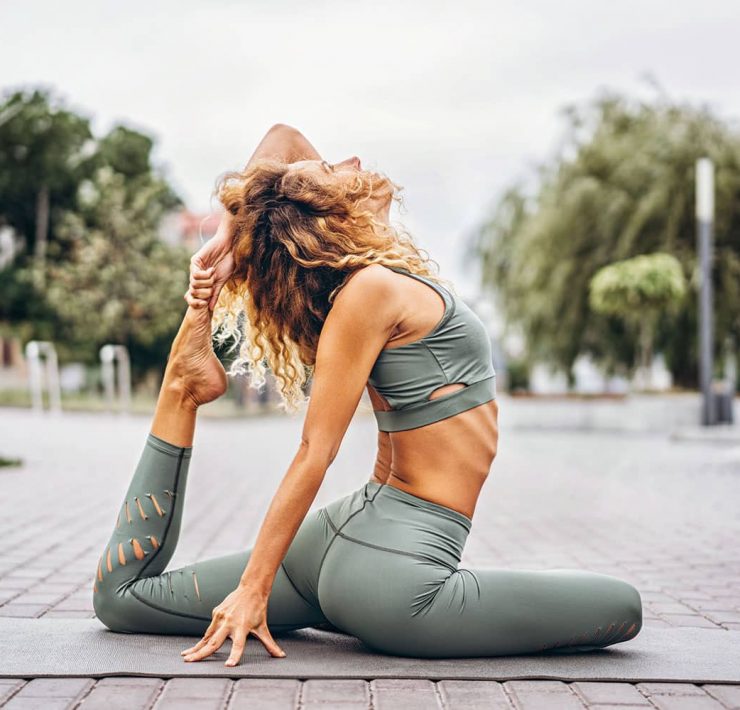
Susan views the world through a lens of spirituality, health,…
Although bending your body into contortionist shapes isn’t the goal of having a yoga practice, these advanced yoga poses can be a challenge to help push beyond your perceived limits and find that balance or union between surrender and strength.
Advanced yoga poses help us go deeper into meditative states, especially when basic yoga asana become a bit too routine. They help open us up to new perspectives and insights, and also allow us to explore areas of ourselves that we may never have considered in the past.
Safety and Mindfulness First
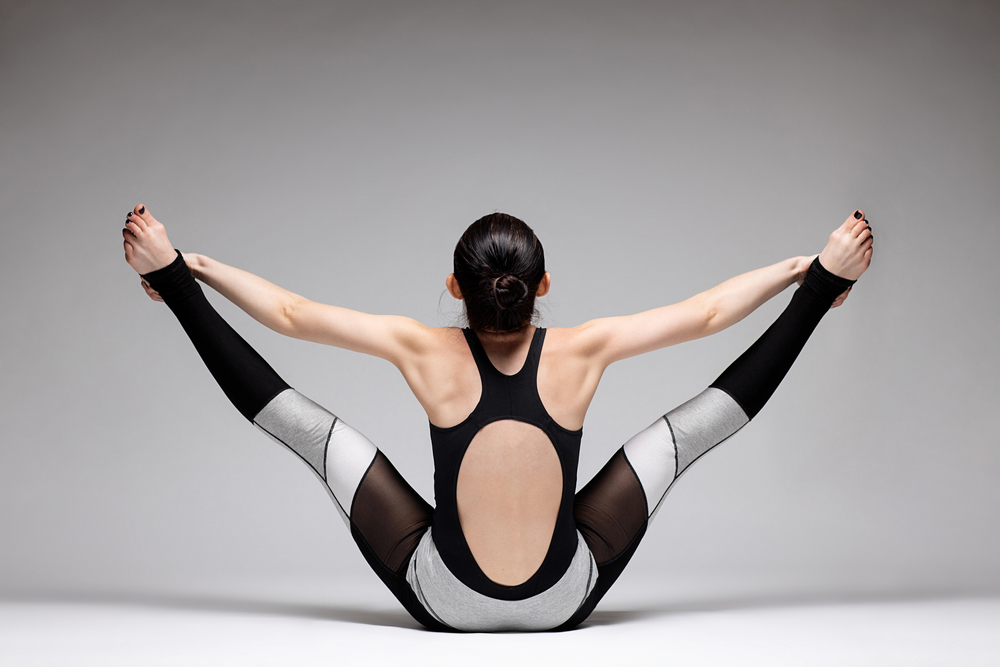
When you feel ready to take your practice to the next level with more arm balances, hip opening asana, and back bends, always approach each new pose with an honest assessment of your body and your current abilities and mindset. You should always have a trained yoga teacher with you when you first have a go at a new yoga pose to understand the muscle groups involved in the pose and the intention behind the posture.
Warm up your entire body, as with any yoga practice, and prepare your system with poses that will strength, lengthen, open up, and stabilize the target areas for each advance asana.
Killer Praying Mantis Pose

Your body needs to open up in two different directions for this pose. It is a strong hip opener through your inner thighs and hip flexors, and also has a major opening through you back quad. The key to this pose, as will all other advanced yoga asana, is to maintain deep, long, and easeful breaths no matter what position you put your body in. If forceful effort is needed, back off and find that perfect balance between comfort and challenge.
Inversions with Leg Variations

Inversions are already challenging enough on their own. But once your find that sweet spot where you can stay on your hands, head, or forearms with stability and strength, you can start bringing variation to your inversions by changing up your leg positions.
Place one or both your legs in an inverted Padmasana or Lotus Pose to open up your hips while your upside down, or twist them at the knees and ankles like you would normally do in Garudasana or Eagle Pose.
With any inversion, keep the entire central line of your body engaged, all the way from your heels to the crown of your head.
Fallen Angel
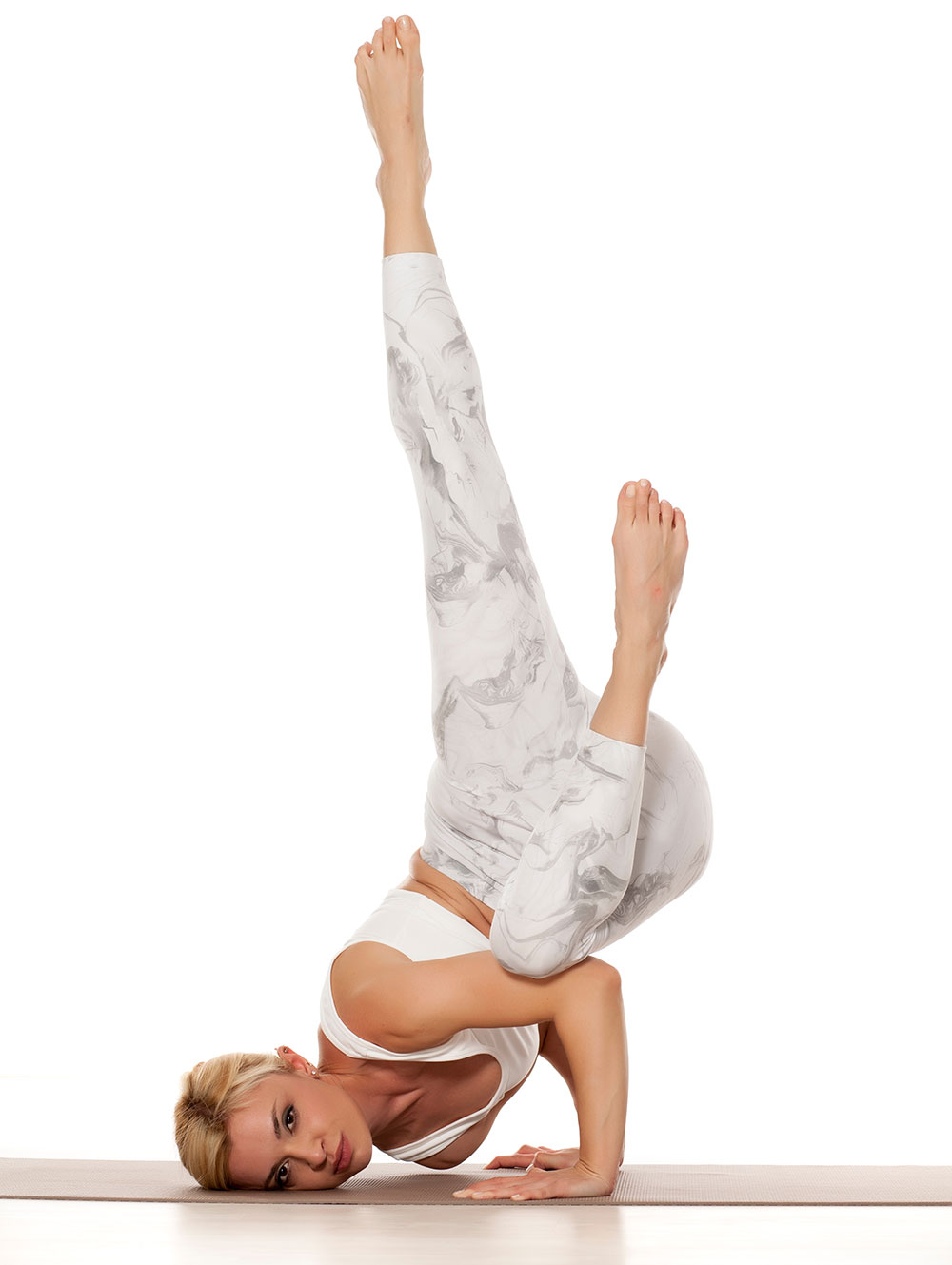
This advance yoga pose is part inversion and part twist from the navel. Warm up your body with a few rounds of Surya Namaskar and poses like Bakasana, or Crow Pose and lead up to Eka Pada Koundinyasana I or Hurdler which is already very similar to the final form of Fallen Angel Pose.
When you are in Fallen Angel Pose, ensure that you feel no sharp pain or pressure on your neck that could affect your breathing or blood circulation. If you do, lower your top leg until you can breath comfortably. Keep your toes pointed upwards towards the sky and keep squeezing your elbows together to create a stable shelf.
One-Legged Forearm Wheel
This deep backbend is a progression from Chakrasana or Wheel Pose that creates a deep opening for your shoulders and chest, and also challenges your sense of balance and coordination. Begin by getting into Wheel Pose and carefully bring the crown of your head onto your mat so you can place your forearms on the ground. Press through your elbows to get the weight off your head and neck.
Continue to expand your heart forward in this pose. When you feel stable and you can still breath normally, raise one leg up to point your toes towards the sky. Keep your hips in one line and be mindful if your body starts to sway or tip in one direction or the other.
Dancer’s Pose Variations

Natarajasana, or Dancer’s Pose, is meant to embody Lord Shiva, who is said to have created the universe when he beat his drum and began dancing. All versions of this pose require a deep back bend, chest opening, and leg strength to achieve that balanced mix of grace, flexibility, mobility, strength, and stability.
Mermaid Dancer – Position your lifted back leg into the crook of your elbow, just like you would in Eka Pada Rajakapotanasana.
Scorpion Dancer – Bring both your hands over your head and hold onto your back foot. This version of Dancer is more squared in the hips and a bit more symmetrical than the typical Natarajasana.
Full Standing Split – From the Scorpion Dance, extend your back leg up so your toes point up to the sky. Instead of holding on to your foot, grab your leg from your ankle.
Eka Hasta Vrksasana – One Handed Tree Pose

This pose requires strength in your biceps, triceps, core, and shoulders. Just like other inversion asana, you need to keep your entire central line engaged for stability and balance while holding this position.
Maintain as much contact with the earth as your foundation by spreading your fingers as much as you can and pushing into your fingerpads. Use the point of your toes to find balance and stability in your hips and look towards the floor to focus, without compressing your cervical spine – keep your neck long.
Sirsa Padasana – Head To Foot Pose
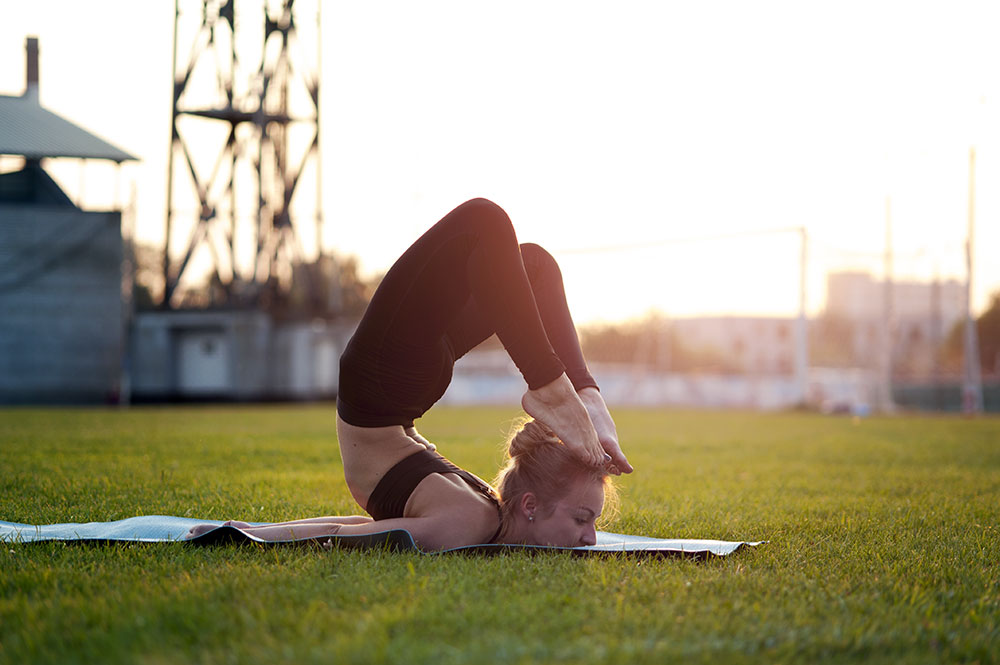
This advanced pose combines a deep back bend with a headstand and scorpion pose. It is one of the poses included in the Ashtanga Yoga fifth and sixth series – the most advanced of his sequences.
Build up to this pose by mastering headstand. Keep your forearms on the ground and clasp your hands behind your head to create that triangle shape with your arms. With control, lower your feet towards your head to make a scorpion tail shape with your body. Keep your drishti, or focus point towards your nose.
Pungu Mayurasana – Wounded Peacock Pose

Peacock Pose is already a challenging pose. Pungu Mayurasana, or Wounded Peacock Pose, takes it a step further by turning this arm balance into an asymmetrical pose. Get into this pose from a kneeling position. Separate your knees and place your right hand on the ground from between them and spread your fingers wide.
Place your left hand on the ground in front of you, but do not focus on putting weight on it at all. Bend your right elbow and place it as close to your navel as possible. Engage your core and begin to straighten your legs straight back, using your right arm as a shelf to lift up on. Shift your weight forward and bring your left hand off the ground too as your legs lift up.
Kala Bhairavasana – Destroyer Of The Universe Pose

This pose is named after most fearsome form of Shiva the Destroyer. And many people say it does look like something out of The Exorcist.It pushes your oblique strength, and also your balance and flexibility in your hips, adductors, and hamstrings. The leg behind your head is believed to be a reminder to keep your ego in check.
From Compass Pose, anchor the leg which you normally hold in your hand behind your head. With your leg secure, shift your body into side plank by extending your free leg. The leg behind your head would normally be the lower leg and only your upper leg is in contact with the floor.
Yoganidrasana – Yoga Sleep Pose
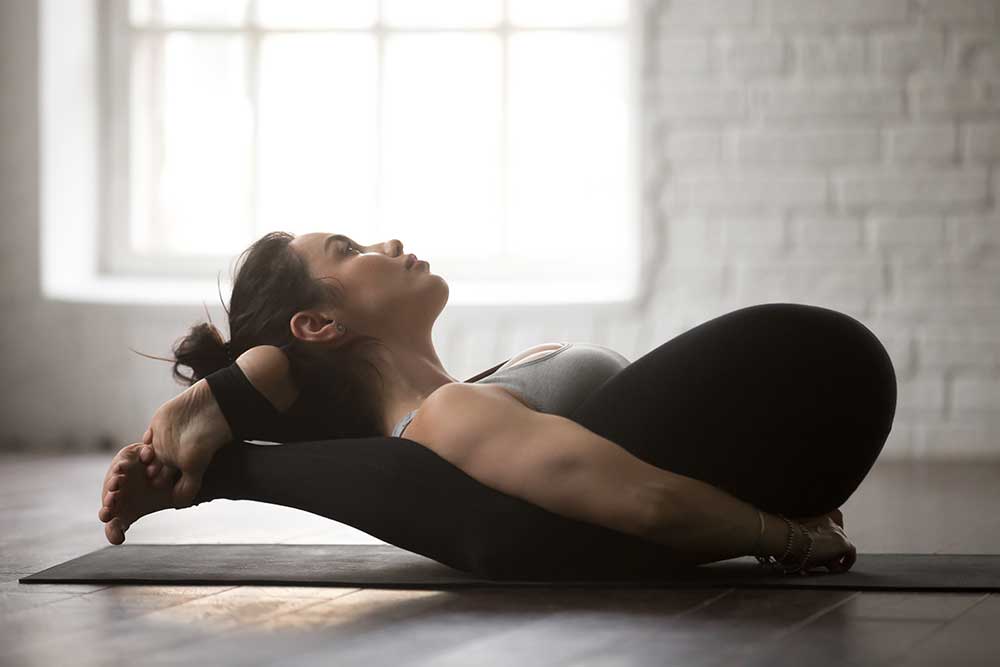
This pose is said to be great for those who suffer from insomnia. Very advanced meditators and yogis are claim to practice this single pose for 30 minutes at a time. It is an inverted forward bend in a reclined position that focuses on your spine and hamstrings, and also opens up your hips.
If you can’t quite get your ankles to interlock behind your head, feel free to loop a yoga strap around them and rest the back of your head as you pull it through the strap. That way you still get the basic shap of the pose without straining.
Tittibhasana – Firefly Pose

Tittibhasana is called Insect Pose or Firefly Pose because the shape you make with your body makes you resemble a winged insect. It requires deep hip flexion, flexible hamstrings, and arm strength to keep the balance.
Prepare for this pose with other arm balances like Bakasana (Crow Pose), Bhujapidasana (Shoulder Pressing Pose), and Eka Pada Koundinyasana B (Flying Splits) to train your hands and wrists. This pose comes a bit more easily for those with naturally long arms, but you can also place sturdy yoga blocks under your hands to make up for the space.
Eka Pada Galavasana — Flying Crow Pose

With one leg in the air and the other resting on your arms, this pose requires strength and balance, but also focus. It is a pose that will really test your mental alertness. Keep a steady drishti to help you concentrate and be mindful of the angle of your lifted hind leg – it will cause you to tip back or forward.
Develop the arm strength and stability for this pose with Bakasana and Chaturanga. If you can’t quite lift your back leg off the floor, place it on a block. You may also practice this pose with your back leg on a wall to get the height and allow yourself to get used to the weight of your body on your arms.
Kurmanasana — Tortoise Pose

Like a tortoise retreating into its shell, this asana will help you move inwards mentally to escape the noise and distractions of everything external. It is one of the two apex poses of the Ashtanga Yoga Primary series and requires patience and centeredness to practice.
To go deeper in this pose requires you to release and even soften instead of reaching. Although many will forget to breathe in Tortoise Pose, it’s actually one of the keys to help you get into it. Warm up your body with Forward Folds, Malasana, Baddha Konasana, and other asana that will open up your hips and stretch your hamstrings.
Hanumanasana — Full Splits Pose
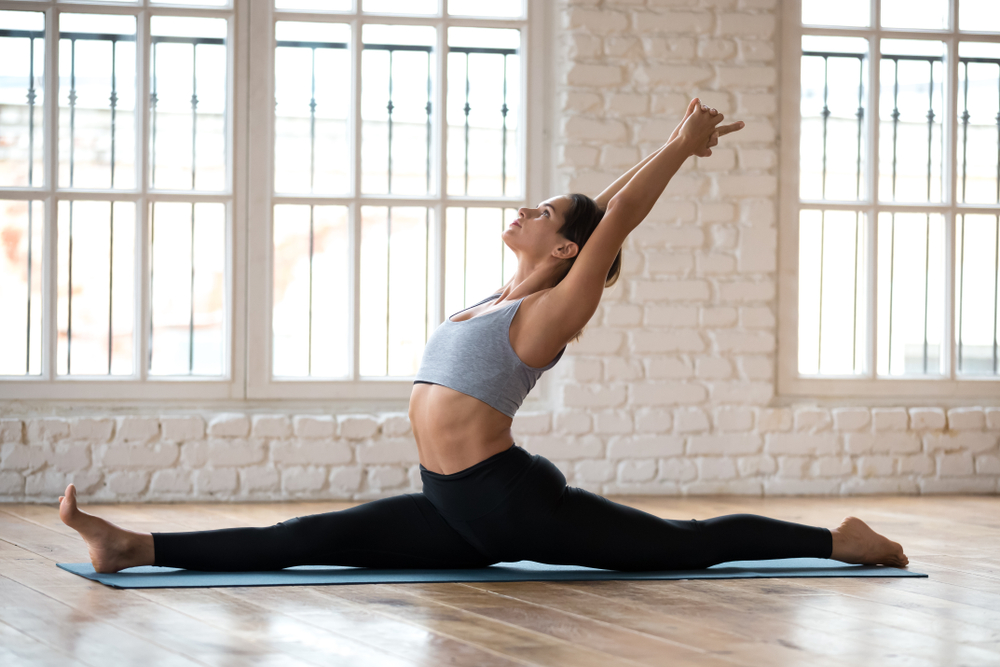
This pose is named after Hanuman, one of the most beloved gods in the Indian Pantheon. Many tales feature Hanuman, one of the most famous is the Ramayana where Hanuman proved himself to be a loyal friend and servant to Lord Rama as he rescued his wife, Sita, from Ravana.
It is said that this pose is inspired by how Hanuman leaped across the sea to reach Lanka to find Sita who was being held captive.
Savasana aka Corpse Pose or Final Resting Position

The importance of laying in Savasana at the end of every yoga practice cannot be stressed enough. Every serious yoga practitioner includes this pose in their routine whether you are a beginner or can bend your body into the craziest advance yoga poses.
This pose is the embodiment of the corpse of Lord Shiva – who is himself Pure Consciousness. It isn’t just about laying down after a dynamic or challenging yoga class. It’s about staying present in each moment by staying empty yet at the same time full of infinite possibilities.
Conclusion
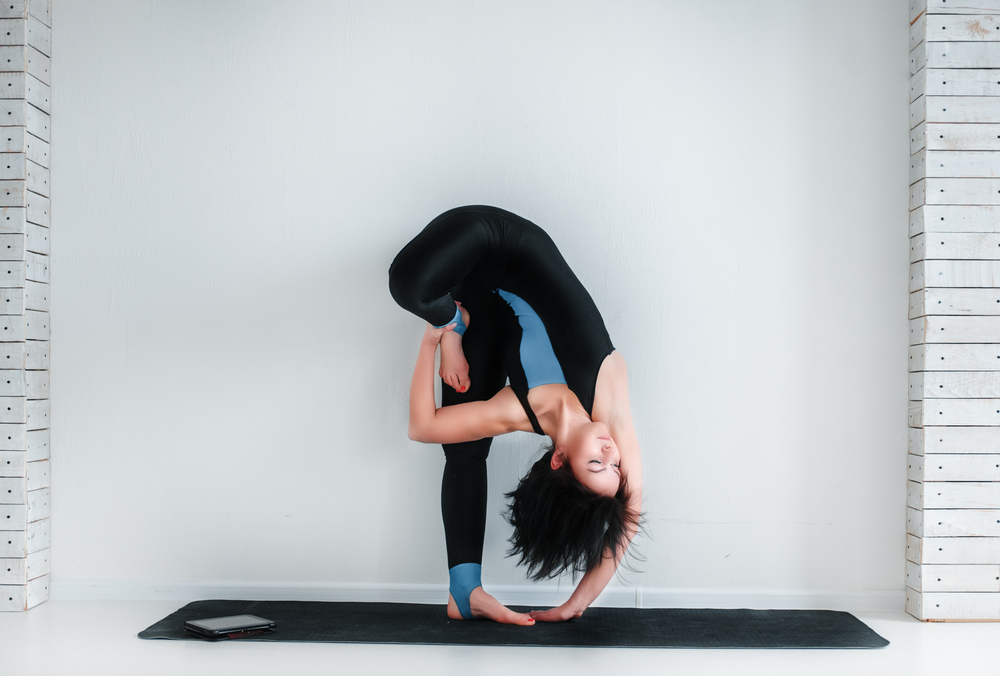
Advance Yoga Poses are really just new ways to open up your body and yourself to think out of the box and break free from perceived boundaries and limits of your body and mind.
The most important common thread to remember in all of these challenging yoga poses is to breathe. While you can lengthen hamstrings, build muscles, and open up your hips and shoulders, all these physical feats won’t necessarily help you get into these yoga asana without the proper intention behind your practice.
What's Your Reaction?
Susan views the world through a lens of spirituality, health, and compassion. Her positive outlook on life shines through her writing, which is heavily focused on yogic living, meditation, and conscious eating.







